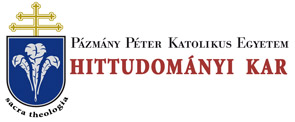Folia Theologica 3. (1992)
Charles Duggan: Decretal letters to Hungary
DECRETAL LETTERS 9 II. To the archbishops of Esztergom and Kalocsa Coniugatus in monasterium Alexander III to the archbishops of Esztergom and Kalocsa, concerning the reception of married men in monasteries, and their ordination to the priesthood or episcopate Coniugatus in monasterium (1159-79), addresssed jointly to the archbishops of Esztergom and Kalocsa, is one of the very few decretals of Alexander III to Hungary to be found widely in the collections — in the primitive Roman/Spanish, Italian, English and French collections, and in the great systematic collections from the seminal Appendix through to the Decretales of 1234. It ruled firstly (a) that a husband may not be received into a monastery, unless his wife had been similarly converted — nec recipiatur apud Deum illius viri conversio, cuius sequitur coniugalis federis prostitutio; and since the clerical order excels the monastic, no married man may be advanced to holy orders, unless released by his wife who also professed continence — ut fiat deinceps de carnali spirituale coniugium. And secondly (b), since all the greater care should be taken to avoid error in the promotion of one who is set above all ranks, the recipients must not ordain a married man as bishop, unless his wife first professes continence, and assumes the veil and dress appropriate to religion. The pope does not wish the husband’s promotion to be the occasion of perdition to his wife left in the world. * * * WH 136, JL 14104, 1159-79: (a) Coniugatus in monasterium + (b) Sane si coniu- gati. Pd Századok 411-12 no. 3. Complete: 1 Dert. 14, Eber. 7.1, 1 Par. 145, Aur. 43ab + 47c, Flor. 166, Roff. 106, Wig. 1.10, Claustr. 36, Coll. 2.39, Pet. 1.45. Sections: Claud. 123 A (a[ii-iii]) + 123 B (b(ii-iii)), App. 5.6+7, Bamb. 49.6+7, Lips. 58.6+7, Cass. 57.7+8, Tann. 7.2.5+6, Sang. 8.13+14, FrcfMax.a 4.3 + 3.5,1 Rot. 1.7(a), l Comp. 3.28.5+6, X 3.32.5(a[ii-iii]) + 6(b[ii-iii]). Kalocsa’s designation was especially unfamiliar to the scribes, and frequently appears in the address as Coloniensi, Colonensi or Colon, (instead of Colocensi), presumably through greater familiarity with the archbishopric of Cologne. [The complex transmission of this letter will be made clear in the Regesta decretalium, and a study of the four Frankfurt collections is in an advanced state of preparation by Peter Landau.]
